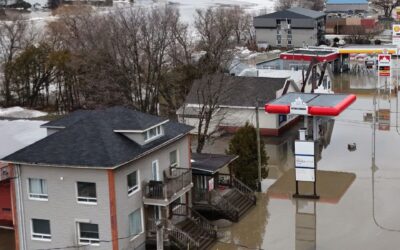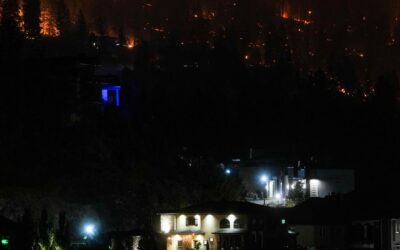Last Saturday, widespread storm mayhem blasted through Ontario and pummelled Quebec. Shortly after the five minutes of weather fury ended, I made my way from the west end of Ottawa to the east end and then far south. Over my 50 kilometre drive I saw trees and power lines down everywhere. And I mean everywhere. But on balance, it struck me there was not much damage to buildings, and so perhaps, I thought, the storm was not so bad.
But as the true scale of the damages was revealed on social media, the scope of the destruction on the electricity network became evident. Hundreds of thousands of people lost power in Ontario and Quebec and would remain without power for days. Schools and businesses were shuttered, triggering widespread costs and compounding COVID anxiety for many. As gas stations remained dark with no power, or the gasoline ran out as people scrambled to top up, energy security was suddenly a concern.
That’s when it struck me: Until we make our electricity networks more resilient, and start to bury our networks out of reach of tree branches, we are in for more power outages—a lot more.
Our energy security is under threat
Here at the Canadian Climate Institute, we have been thinking a lot about the costs of climate change, including the impact of more frequent and intense storms on the resilience of electricity networks. Let’s explore why our energy security will only decline unless we change course and invest in hardening our electricity infrastructure:
- Weather-related disasters are becoming more frequent, intense, and costly. In our Tip of the Iceberg report, we looked at two long-term data sets of weather-related disaster in Canada. What we found is troubling. In the 26 years before 2009, there were 128 weather-related disasters, or about 5 per year, with an average cost per storm of $1.2 million. In the 11 years since 2010, there have been 118 storms, or 10 per year, averaging $5 million per storm. This represents a more than doubling in the annual number of storm events and a fourfold increase in their cost. For large storms like the recent British Columbia floods in November 2021, the frequency of storms has increased 2.6 times and the average cost of each storm has more than doubled. So, we’re getting more frequent and intense storms, and the most destructive ones are getting increasingly destructive.
- Electricity transmission and distribution networks are highly climate sensitive. In our report Under Water: The costs of climate change for Canada’s infrastructure, we conducted spatially explicit analysis of the risks of higher temperature and more precipitation to Canada’s electricity transmission and distribution network. We concluded that climate change will damage both the quantity and reliability of electricity distributed to households and businesses across the country. Today, we estimate that Canada’s electricity system is paying $1.5 billion more each year due to climate change, with annual costs expected to rise by billions to mid-century and beyond. And this is without factoring in storm damage, which means the total costs and damages will be much higher.
- Greater resilience pays for itself. In our paper Enhancing the resilience of Canadian electricity systems for a net zero future, we noted that the failure to build resilient electricity transmission and distribution networks could expand the stock of vulnerable electricity infrastructure, increase overall system costs, lead to greater disruptions to households and businesses, and ultimately jeopardize Canada’s net zero transition.
Split incentives make building resilience a challenge
So what is the challenge to hardening electricity sector networks? To put it simply, there is a wedge between the benefits to the utility responsible for hardening electricity networks and the broader societal benefits of more resilient utility infrastructure. This split incentive, where one party is responsible for the cost but does not see the full range of societal benefits, results in electricity infrastructure that is dangerously unprepared for a warming climate.
Let’s unpack this a bit.
Utilities responsible for hardening electricity networks work on a cost-of-service basis, and for an alternative delivery model to be selected, it must be cost-effective. This is to say that the option that is cheapest to build, operate, maintain, and repair becomes the preferred choice. From a utility perspective, the costs of burying power lines, for example, likely exceed the costs of the current practice of overhead power lines even when storm damages are included. There is little economic incentive to change practices.
But from a societal perspective, it makes more sense when evaluating options for transmission and distribution infrastructure to compare all the benefits with all the incremental costs. When a broader societal perspective is considered, storm costs to businesses and households factors into the investment choice. Costs that can be avoided with hardened infrastructure include tangible costs such as business disruption, lost wages, and food loss due to spoilage, as well as less tangible costs such anxiety over service disruption or increased property values due to less unsightly wire spaghetti. In the Institute’s recent report on electrification, The Big Switch: Powering Canada’s Net Zero Future, we argued that this split incentive means there is a case for society subsidizing the build-out of a net zero electricity sector. These latest storms, and the prospect of even worse to come, only add to the urgency of that case.
Absent a change in current practice, and the myopia of cost-effectiveness, we can expect paying more for storm damages and living in a much less secure and reliable energy future. We can see the next storm bearing down—are we going to do something about it?








